#Bryozoa
Text
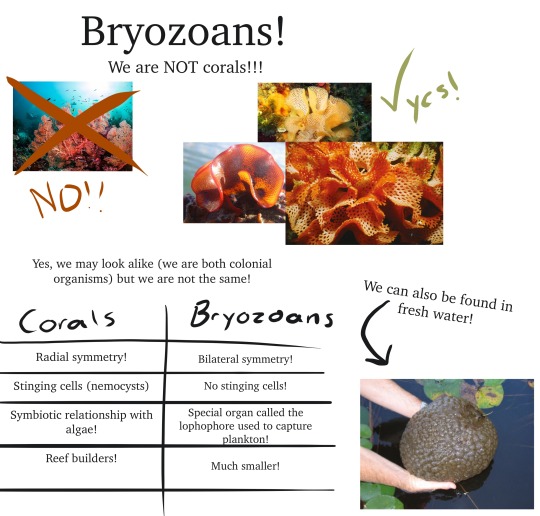
Poster on bryozoan awareness I made for my marine biology class, figured it might be appreciated here
How to tell them apart hacks: be a plankton and see how it eats you
2K notes
·
View notes
Text
Phylum Round 1

Mollusca: Snails, slugs, cephalopods, bivalves, chitons, limpets, and others. This group contains the largest invertebrates, the giant and colossal squids. They are the largest marine phylum, but many members are terrestrial. Although they are incredibly diverse in body shape, all Molluscs generally have a hard "radula" used for eating, a mantle that may secrete a hard shell, and a body mostly composed of dense muscle. These animals can be predators, herbivores, filter feeders, symbiotic, and even parasitic. This phylum exhibits remarkable diversity overall.
Bryozoa: Moss Animals. Small, frequently colonial, and often colorful, Bryozoans are found in both freshwater and marine habitats. Their crown of tentacles are used for filter feeding, similar to Entoprocta. Colonies consist of zooids living within small cup-like supports that fuse together, forming encrusting or branching structures. Individuals may take on different shapes for different roles within the colony, such as the "avicularia", which are bird-beak-shaped zooids used for defense.
#mollusca#bryozoa#animal bracket#tumblr bracket#bracket tournament#poll bracket#phylum round 1#phylum
143 notes
·
View notes
Text
Taxonomy Tournament: Spiralia

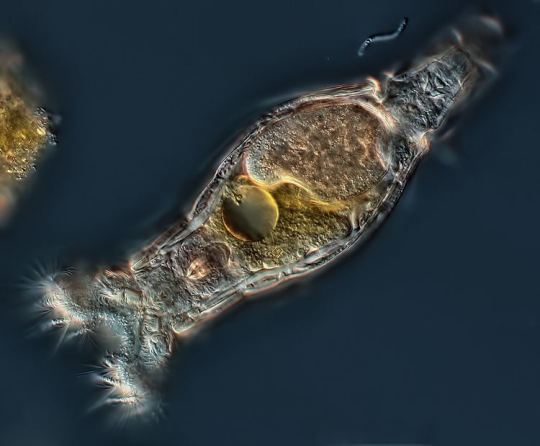
Bryozoa. This phylum is made up of tiny aquatic invertibrates that mostly live in sedentary colonies
Rotifer. This phylum is made up of microscopic aquatic animals with a cilliated corona sourrounding the mouth
87 notes
·
View notes
Text
Phylum #22: Entoprocta, the goblet worms!

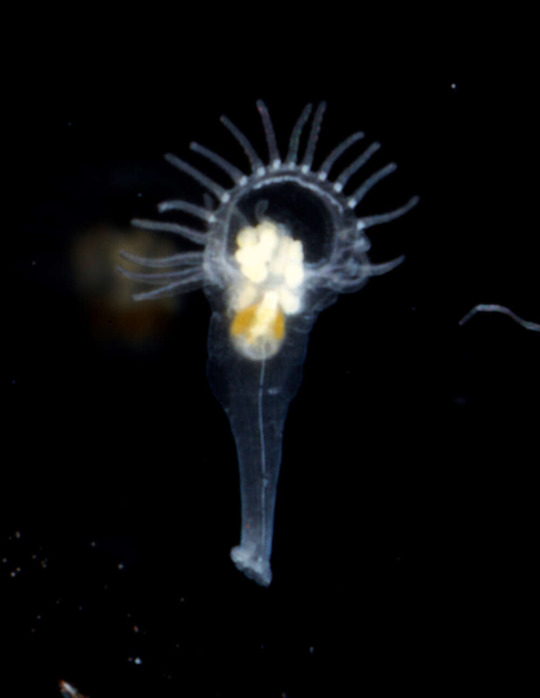
Despite their looks, these are not sea anemones, crinoids or bryozoans - these creatures have in fact been found to be mollusks' closest relatives! Although this part of the tree of life is in flux, entoproctan larva share the peculiar nervous system of mollusks, leading researchers to unite both in a single clade!
Entoproctans or kamptozoans, often referred to as goblets due to their stalked cup-like form, have a much simpler body plan than their relatives. A crown of tentacles at the top of the cup beats to bring a current through the U-shaped gut inside, passively filtering food particles. And that's it!
Goblets often live in massive colonies, with new ones budding from the stalks of previously-established ones. These stalks actually serve a triple function, also extending the reach and allowing them to share nutrients. However, a few species are free-living and solitary, crawling with their foot (their equivalent of the stalk), hitching a ride on other animals, or even jumping over!
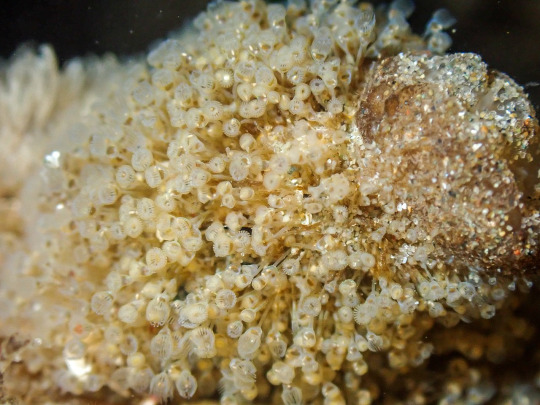
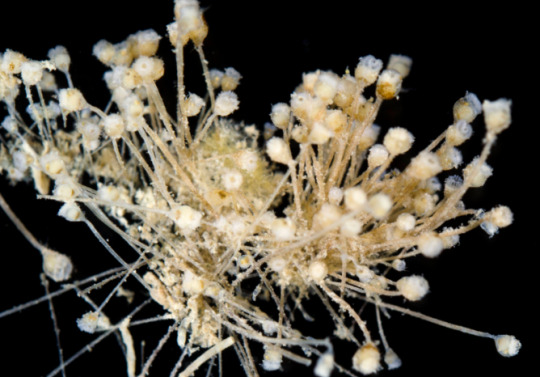
#forms and phyla#entoprocta#kamptozoa#goblet worms#goblets#tetraneuralia#marine biology#marine life#and this tag will make sense much later#bryozoa
80 notes
·
View notes
Text

Rubbery Bryozoan, Alcyonidium hauffi
99 notes
·
View notes
Text
AAH this is such a hard question haha

Thanks so much for asking @insectsinthestars ! I felt like this required some photos!
I truly do not think I have a favorite, I tried to pick one but I could not. I love them all so much. Here are a few that mean the most to me though!
This blob of Bryozoans! This one is special to me because it is a chunk of just pure Bryozoans, it is actually super light and REALLY delicate. Every time I set it down, it sheds some particles. The fact that this survived the elements for potentially hundreds of millions of years makes my heart tighten up.
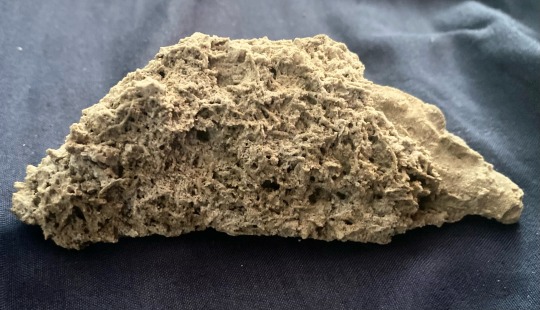

These are also the largest branches I have found, by far! (Bryozoa are tiny tiny animals that live in colonies, similar to coral)
Of course, I have to include my ONE trilobite haha. Yeah, that was a good day. I kinda love that it is just his little booty, hehe. Maybe one day I will work up the courage to attempt to chisel the rest of it out, I just reallllly do not wanna damage it. But yea.. man, do i cherish it
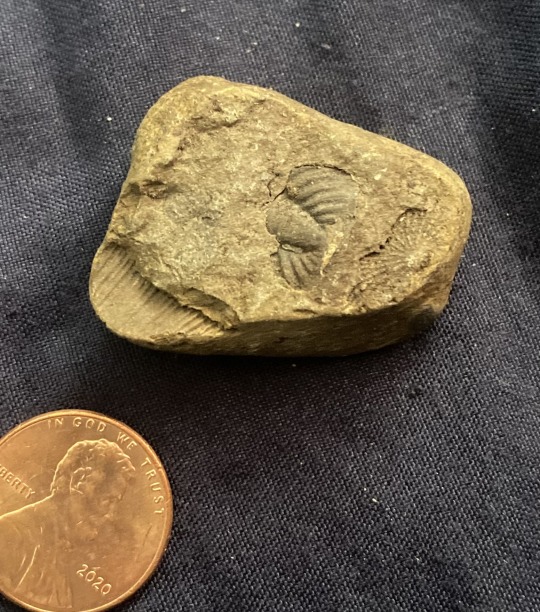
And I would honestly feel bad not including any Brachiopods, since they make up 80% of my fossils. But again, I really can’t choose a favorite:( I have a lot and I love them all. So these one’s are from the very beginning of my fossil hunting days (2019) and I can still remember finding them and crying in the woods :’)


#devonian period#my fossils#bryozoan colony#bryozoa#bryozoans#trilobite#trilobites#devonian fossils#devonian fossil#devonian#fossilblr#rockblr#fossils#fossil#amateur paleontology#paleontology#brachiopods#brachiopod#rocks#geology#earth science#natural science#nature#fossil hunting#fossil collecting
19 notes
·
View notes
Text
Some other pics from previous fossils. With an Montlivaltia coral, piece of bryozoa and more belemnite cone fragments.

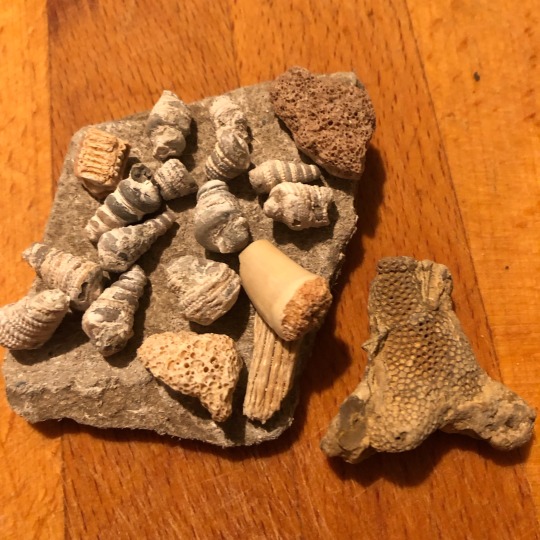
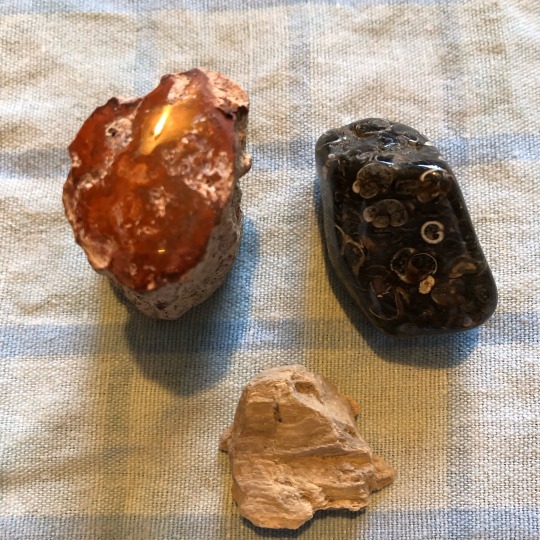

With petrified wood and agate.
#fossil collection#fossil#fossils#belemnite#petriefied wood#turitella agate#agate stone#rocks#geology#paleontology#bryozoa
8 notes
·
View notes
Text
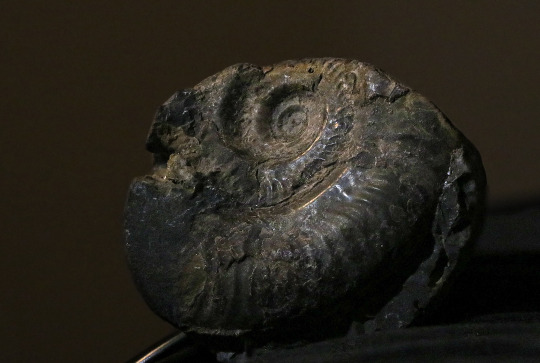
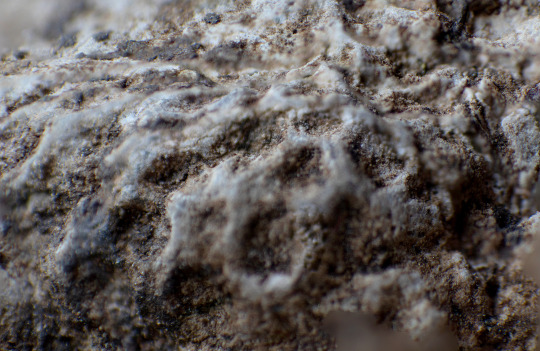





I've been learing macro photography to help image the fossils I'm studying. Been trying it out at home by turning the camera lens around. It's difficult to get a things right doing it manual hand held but I still like how these turned out. To give you a sense of scale, the ammonite is about 5 cm across, the image of the cactus spines is about 3 cm across, and the bryozoan, and coral fossils, and pyroxene crystal images are about 1 cm across.
The fossils I am trying to photograph at work are about 1 mm across. I can see them in regular optical microscopes with acid extractions and thin sections. But these methods take a long time to prepare, and require nasty chemicals. They also only let us look at very small areas so the fossil is out of context, we also lose a lot of details with each preparation process.
There is a whole scale of fossil detail we are currently missing and I am hoping that using these photography techniques I can access that information and learn more about the mysterious organisms that were living on our planet over a billion years ago.
Also making tiny things big is a lot of fun and makes me happy.
#geology#geologyjohnson#palaeontology#fossils#fossilfriday#devonian#jurassic park#ammonite#bryozoa#corals#macrophotography#macro#macrophoto#paleontology
15 notes
·
View notes
Text
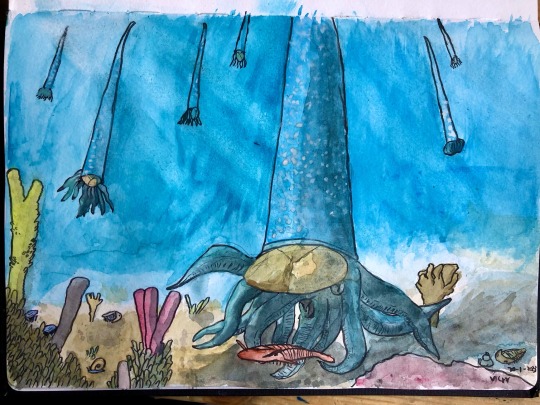
An Endoceras orthocone descends upon an unsuspecting Pseudogygites trilobite. While they are often reconstructed swimming sideways, recent studies have shown orthocones actually swam upright in the water column, so I drew them more like a claw game, grabbing prey from the sea floor.
#edoceras#pseudogygites#orthocone#endocerid#asaphid#cephalopod#trilobite#arthropod#cw: bugs#tubulate coral#bryozoa#brachiopod#ordovician#paleoart#palaeoblr#paleoblr#this trilobite has actually been found with an orthocone having taken a bite out of it
39 notes
·
View notes
Text

Love finding these guys
#fossils#alabama fossils#bryozoan fossil#fossil collection#fossil#rock collection#cool rocks#cahaba river#river rocks#river find#paleo#paleoblr#paleontology#palaeontology#palaeoblr#bryozoa#bryozoan
33 notes
·
View notes
Text
WAR AND HATE ON PLANET EARTH
WELCOME TO THE PHYLUM PHIGHT
A BRACKET WHERE THE 37 KNOWN PHYLA OF ANIMALS (extant and otherwise) WILL BATTLE TO THE DEATH. ONLY ONE MAY BE CROWNED CHAMPION-- AND ASCEND TO THE STATUS OF KINGDOM (i have this power)
WHO WILL IT BE? THE CHORDATES, CONTAINING EVERY KNOWN VERTEBRATE INCLUDING YOU AND ME? I FEEL LIKE THAT'S A BIAS. MAYBE THE HUMBLE TARDIGRADES, THE INTERNET'S FAVOURITE EXTREMOPHILES? OR WILL IT BE THE PENIS WORMS? I FEEL LIKE IT'S GONNA BE THE PENIS WORMS.
TOURNAMENT STRUCTURE:

ok ditching allcaps now <3
round 0
preliminary face-off between the odd phellas. lasting one (1) week to give bitches time to mobilise
protoarticulata VS rhombozoa
2. phoronida VS vetulicolia
3. petalonamae VS xenacoelomorpha
4. porifera VS rotifera
5. platyhelminthes VS saccorhytida
round 1
all round 1 poll-batches will last one (1) day because dear god there are so many of them. there will however be a cooldown of like, a couple days or something between batches because i am but one man
batch 1 - BATCH TO THE DEATH
6. priapulida VS winner of 1
7. annelida VS chaetognatha
8. trilobozoa VS micrognathozoa
9. bryozoa VS lorcifera
batch 2 - THE BATCHENING
10. tardigrada VS winner of 2
11. brachiopoda VS gastrotricha
12. mollusca VS winner of 3
13. nematomorpha VS gnathostomulida

batch 3 - BATCHETFIELD HIGH
14. chordata VS winner of 4
15. archaecyatha VS cycliophora
16. nematoda VS nemertea
17. ctenophora VS kinohyncha
batch 4 - I HAVE RUN OUT OF BATCH PUNS
18. arthropoda VS winner of 5
19. agmata VS entoprocta
20. cnidaria VS onychophora
21. echinodermata VS hemichordata
round three wait and see!!!
this bracket doesn't require nominations, as the candidates are already set out all nicey for us by Science. how cool of them. Now we make them beat each other senseless for our sick amusement :)
HOWEVER please send asks, suggest representative species or images to make sure we see them at their best, send propaganda/fun facts youd like the filthy electorate to know before they condemn your fav to the deepest most basal pits of taxonomic superhell. lets all get to know the Beasts together. Before we make them fight to the death.
-mod riz (he/him)

ROUND 0 START: APRIL 10TH
#phylum phight#phylum-phight-tourney#tumblr tournament#taxonomy#tumblr polls#tournament#poll tournament#animal tournament#biology#cnidaria#bryozoa#chordata#arthropod#echinoderm#molluscs
32 notes
·
View notes
Text

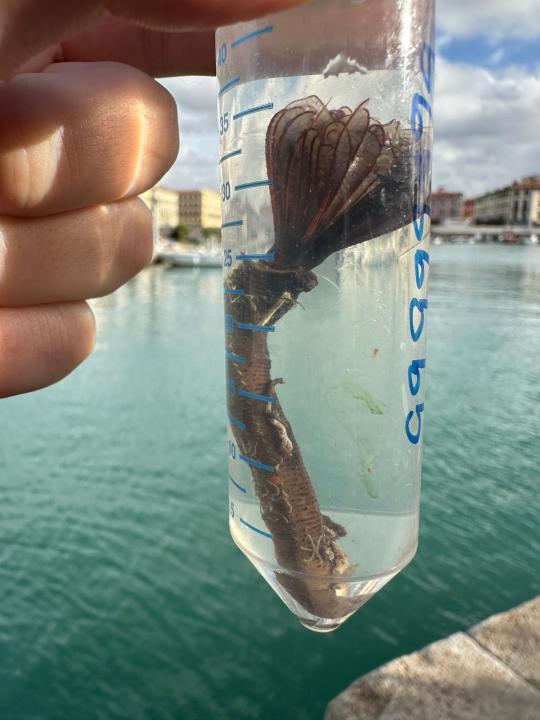


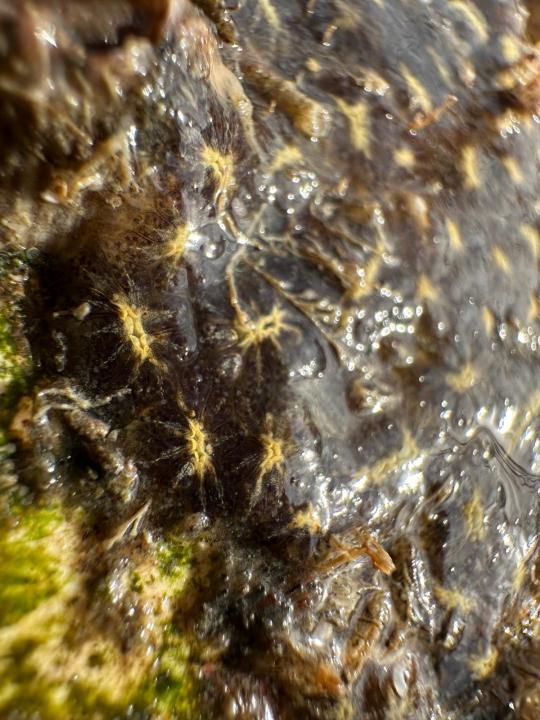

#BioMar#marine zoology#spirograph#fauling#portual fauna#polychaeta#Sabella spallanzani#Bryozoa#Ascidiacea#Nemertea#Annellida
5 notes
·
View notes
Text
Taxonomy Tournament: Spiralia


Entoprocta. This phylum is made up of tiny sessile marine animals, with a ''crown'' of tentacles that draw food to the mouth
Bryozoa. This phylum is made up of tiny aquatic invertibrates that mostly live in sedentary colonies
#animals#biology#polls#poll tournament#zoology#spiralia#Entoprocta#Bryozoa#0x2ev0xd1#animal tournament#Animal Tournament Round 1
20 notes
·
View notes
Text
Friends on a bryozoan sample :3

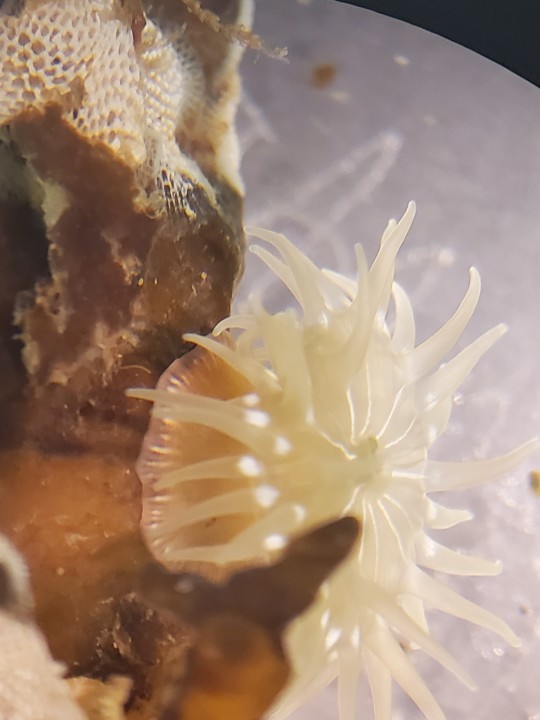

#bryozoa#crab#anemone#Epiactis prolifera#not confident enough in my ability to accurately ID such a tiny crab but is deffo. A Crab. 😎👉🏽👉🏽
1 note
·
View note
Photo

this is called kelp lace & is a seaweed-encrusting bryozoan
via jeannet_leendertse / instagram
16 notes
·
View notes
